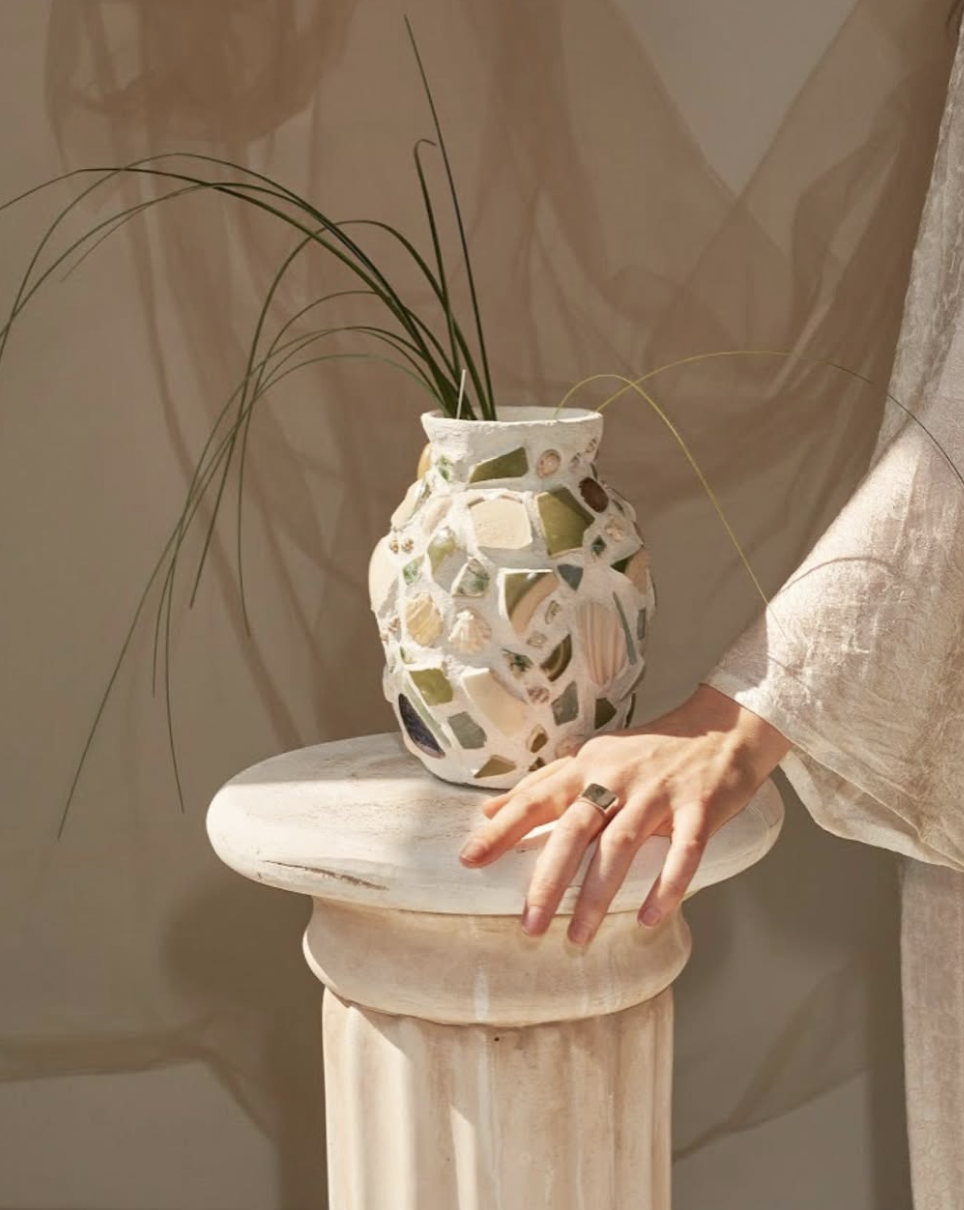Back to Journal

Feeling Good Is The New Looking Good — Part Two
“The only thing that’s happening right now is that we’re creating in a way that is not in harmony with life’s natural rhythms.”
– Mikey Siegel, 2019
The Potters Nod.
Jonathan Anderson said it so clearly that we need to be really mindful too. To the press [backstage at his spring/summer ‘18 show], he urged society to become more humanly grounded. Whether or not his influence as the founder of the Loewe Craft Prize – a contest that celebrates the best of art and design craftsmanship, globally – has made an impact across consumers, it seems that his statement may have just manifested itself into the current culture. More and more individuals are substituting their addiction to technology in favour for hands-on, tactile, and mindfulness hobbies like arts and crafts.
Another mindfulness practice under that category is ceramics (or interchangeably also known as pottery), which has been on the revival for several years now, a close second popular pursuit alongside wellness activities like yoga and meditation. A matter of fact, according to Vogue, it has been stated as the “New Yoga!”. So, what are the mind-clearing benefits of clay? And could something like ceramics be a great example for how a fashion should exist from now on?
“You can’t rush it,” says ceramicist Amanda Moffat in conversation with Vogue. It’s a patient pursuit, also noting that [the ceramics] will crack, break, and fall off in various parts of the process – very much opposite of an instant gratification activity. The mindset of a ceramicist echoes someone that practices yoga or meditation on the daily. Often yogis will shift their mindset back to the present, be patient or if one falls off in a posture, one can always get back up. In wheel throwing or hand building, it’s the same; the potter focuses on one creation at a time, eventually letting go of what the end product will be, allowing the clay to form in their hands, and therefore resulting in a very freeing design practice – even if forming the clay goes a little wobbly. In the firing process, somehow ceramicists also have the ability to trust the process too with the kilns. In most cases, pots either result in near perfections or commonly, beautiful mistakes that are still seen as interesting and useful.
The ceramics design process from continuous practitioners point of view is the most intriguing: “...hours can pass without thinking or caring about anything else – that what is known as the ‘potter’s nod...it’s a feeling that’s very similar to being at the mercy of a wonderful drug, except in this case, it’s a holistic antidepressant” says art-world ceramicist Jennie Jieun Lee. Perhaps this is why many designers from the fast-paced world are turning to slow clay. John Sheppard, who left his job as a designer at The Wall Street Journal is now a full-time sculptural ceramicist and stated that ceramics to him is “...very meditative. It turns off a higher level of thinking. You have to let go and give in to the unpredictability of it. You can go in with an idea of what you want to make, and the clay doesn’t want to do that.”.
With fashion in its current state, the feeling is very much opposite. Somehow along the way, humans believed the world needed more – and more clothes – and that has evidently caused the conflicts, anxiety, and rushing mentality it currently faces. But perhaps with the rise of ceramics, the fashion industry could take a note or two. It is an ancient practice that honours life’s natural rhythms. So, it begs the question – can ceramics definitively encourage fashion to slow down? Into a more natural state of crafting clothing one garment at a time? Or even inspire the industry to become more artisanal and grounded like ceramicists or fellow fashion and textile practitioners in the East?
Ceramics is also a very unique practice where both professionals and amateurs can enjoy the craft. With ceramic studios popping up on the radar, is it possible that the future of fashion results in studios – or even retail spaces – where both professionals and consumers can learn and experience fashion from a grounded practice? Learn textile techniques such as sewing, knitting, weaving, pleating, print-screening, shibori, or hand-dyeing? And make fashion for themselves? The industry needs to start making prominent changes on how it produces fashion and how even consumers can experience fashion in a slow, meditative manner.